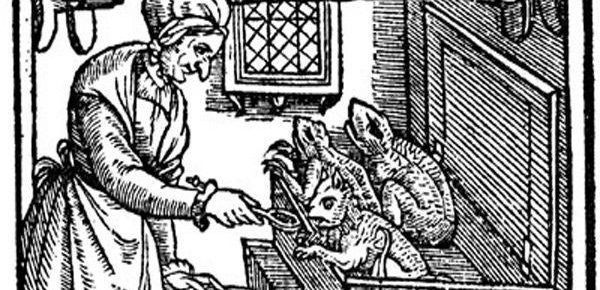
When politicians started calling the coronavirus an “invisible enemy”, it was obvious that the rhetoric accompanying the pandemic was moving from science to magic. Both Donald Trump and Boris Johnson have used the phrase: coined by the former on 16 March 2020, it had spread to the UK two days later. The misdirection of public fear and anger onto an indefinable insurgent – which, of course, could not be predicted by political leaders or dealt with by rational action – has happened before. In early modern Europe and America, the invisible enemy used to be witchcraft. So as I sit at my living-room desk, making insufficient progress on my new book on Elizabethan witches, I find I am in familiar territory. Witches were blamed for all manner of early modern disasters: illness and death in humans and animals, failures of transportation and supply, agriculture and food manufacture, infestations, weather events and political turbulence. They were not usually the first explanation chosen, however. Often, attempts would initially be made to diagnose and treat a problem in accordance with other-than-magical theories. People who fell unexpectedly ill would consult a physician, if they could afford one, or a village practitioner if not. Explanations offered would include humoral imbalance, parasites such as worms, and self-delusion. But if symptoms persisted, minds turned to invisible enemies. Witches were thought to afflict their victims by looking at them – often referred to as “the evil eye” – muttering spells against them, or by sending a demon in animal form to attack them. These “familiar spirits” went by homely names: Jack, Suckin, Bid. But they were deadly, creeping into early modern homes to bite, scratch, touch or just to ill-wish their target. The method whereby the evil was transmitted was unclear. Like the current myth that 5G masts have spread the virus, early modern people wondered if harm could be zapped into them remotely. But whilst they feared the demonic familiar, their only method of addressing perceived attack was by seeking out and punishing the witch. Hundreds of thousands of people were accused, imprisoned and interrogated. Many were tortured, many were executed. These scapegoats were the visible manifestation of the invisible enemy, and the ostracism and violence inflicted upon them were the “war”, the cure, the victory over evil that bolstered magistrates and ministers’ authority across the world. Hundreds of thousands died. There are resonances here that we must not ignore. In recent times we have seen the language of magic return to our minds: “magical thinking” was attributed to extreme supporters of Brexit by an unnamed EU official in August 2017, and Donald Trump has tweeted the words “witch hunt” over 300 times since his inauguration in an attempt to portray his opponents as witch-hunters. The reiteration of the slogan “invisible enemy” is simply the latest example of the ways that studying witchcraft accusations can teach us to respond to the present crisis, holding our leaders to account.
Latest Comments
Have your say!